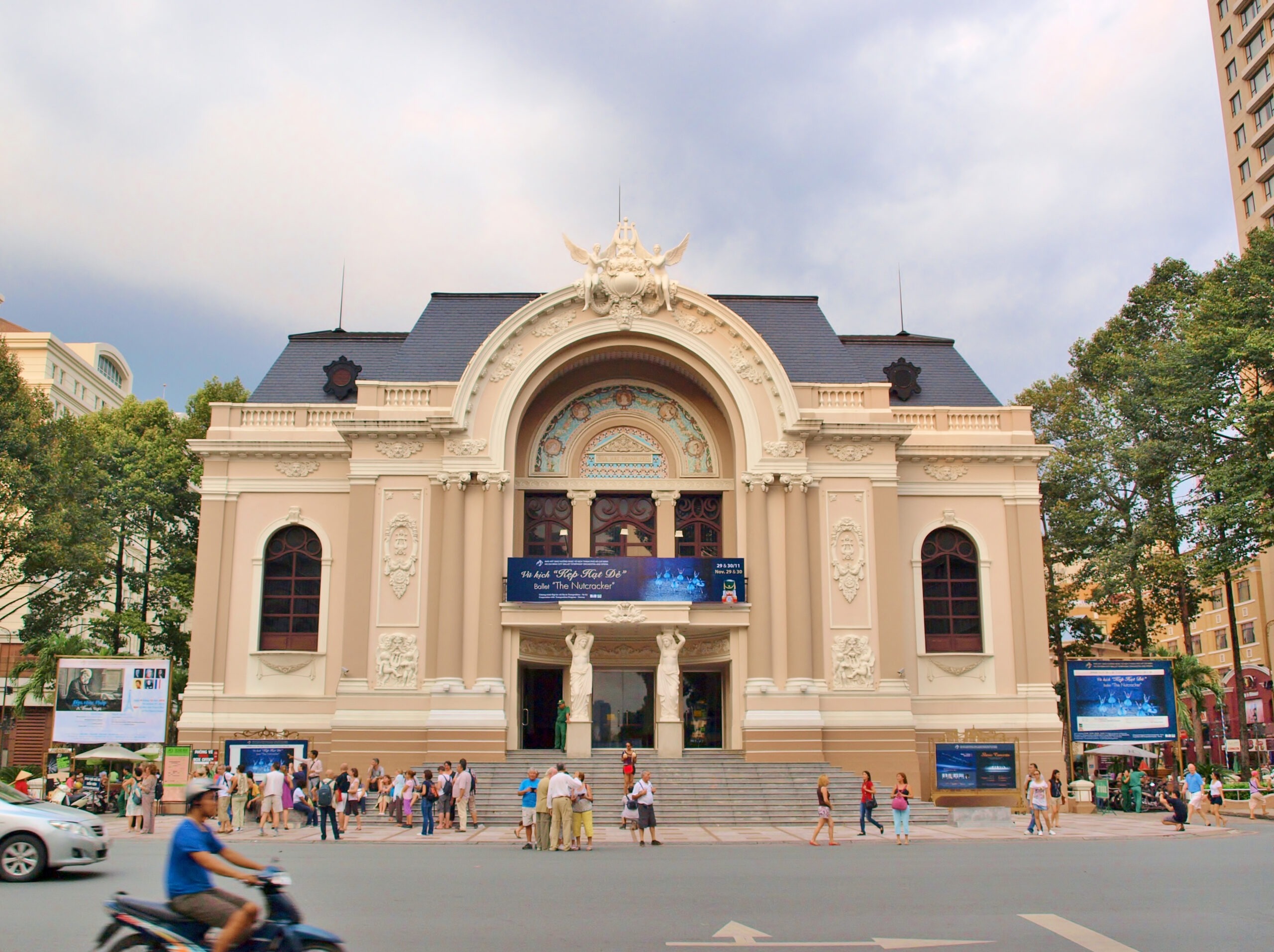For more than a century, the New Victory Theater stood stoically along the ever-changing landscape of New York’s famous West 42nd Street. Built as a legitimate theatre known as the Theatre Republic in 1900, the architecture and design of the theatre heralded a new era when it comes to exhibition and showmanship. This venue is one of the oldest surviving Broadway theaters.
The New Victory Theater is located at 209 West 42nd Street, between Midtown Manhattan’s 7th and 8th Avenues.
Early Past
Built by theater producer and impresario Oscar Hammerstein I in 1900, the theater opened as the Theatre Republic. The building, designed by architect Albert Westover, was the third theater built on West 42nd Street. Inside, there is an elaborately decorated interior crowned with a large dome that featured lyre-playing cherubs perched on its rim. All the original putti and one lyre still remain intact today.
The theater opened on September 27, 1900, starring Lionel Barrymore in James Heme’s play Sag Harbor. There were two known plays by gay playwrights staged at this theater: Clyde Fitch’s Lover’s Lane (1901) and Roi Cooper Megrue’s Where Poppies Bloom (1918).
Renaming
Two years after the theater house was opened, it was leased by David Belasco, who renamed it the Belasco Theatre. Belasco made major renovations to both the stage and the house, which included wrought-iron stanchions with carved bees to the end of each row. The bees serve as an homage to his first initial “B.” Belasco produced a series of plays at the theater starring Leslie Carter, Mary Pickford, George Arliss, and Lilian Gish.
In 1910, the theater was renamed again as the Republic Theatre, when Belasco renamed his Stuyvesant Theatre for himself. The Republic Theatre’s most famous tenant during that time was Abie’s Irish Rose, which ran for 2,327 performances from 1922 to 1927. The theatre continued its run as a legitimate theatre until 1931.
Function as Burlesque and Movie Theater
In 1931, Bill Minsky converted the Republic into Broadway’s first burlesque house and renamed it Minsky’s Burlesque. It remained as such until 1941. Minsky built a double runway down the middle of the auditorium for the strippers – the most famous of whom was Gypsy Rose Lee.
By 1942, it opened as a movie theater called The Victory Theatre, named to support the war efforts during World War II. It began to show second-run movies. When W. 42nd Street’s fortunes gradually declined in the early 70s, it became the first theater in the neighborhood to exhibit pornographic films.
Restoration
In the early 1990s, the Victory Theater returned to serving as a legitimate theater. Its stage was utilized as a venue for plays by non-profit companies. It housed En Garde Arts Company’s production of Crowbar in 1990, and in 1991, the Theater for a New Audience produced their iteration of Shakespeare’s Romeo and Juliet, followed by other productions.
In 1990, New York City and the State of New York jointly took possession of the Victory Theater in an effort to revitalize West 42nd Street. It became one of the seven 42nd Street theaters to fall under the auspices of New 42nd Street. Leased to a non-profit organization Hardy Holzman Pfeiffer Associates, the theatre’s renovation began in 1994. The organization oversaw the redevelopment of several historic theaters.
The renovation was finished in 1995, with a total cost of $11.4 million. The original exterior double staircase removed in 1911 for the widening of West 42nd Street was rebuilt, and the rest of the theater was restored to the way it looked during the Belasco era.
On December 11, 1995, the refurbished theater was opened under the name The New Victory Theater. It became the first and only off-Broadway theater for kids and families. Upon reopening, it became one of the oldest operating theaters in New York City. The 499-seat theater stages up to 16 productions a year.
The theater presents work for children and family audiences all year round, programming a full season of theater, dance, circus, physical theater, opera, puppetry, and other types of performance arts. In 2012, the theater received a special Drama Desk Award “providing enchanting, sophisticated theater that appeals to the child in all of us, and for nurturing a love of theater in young people.”

